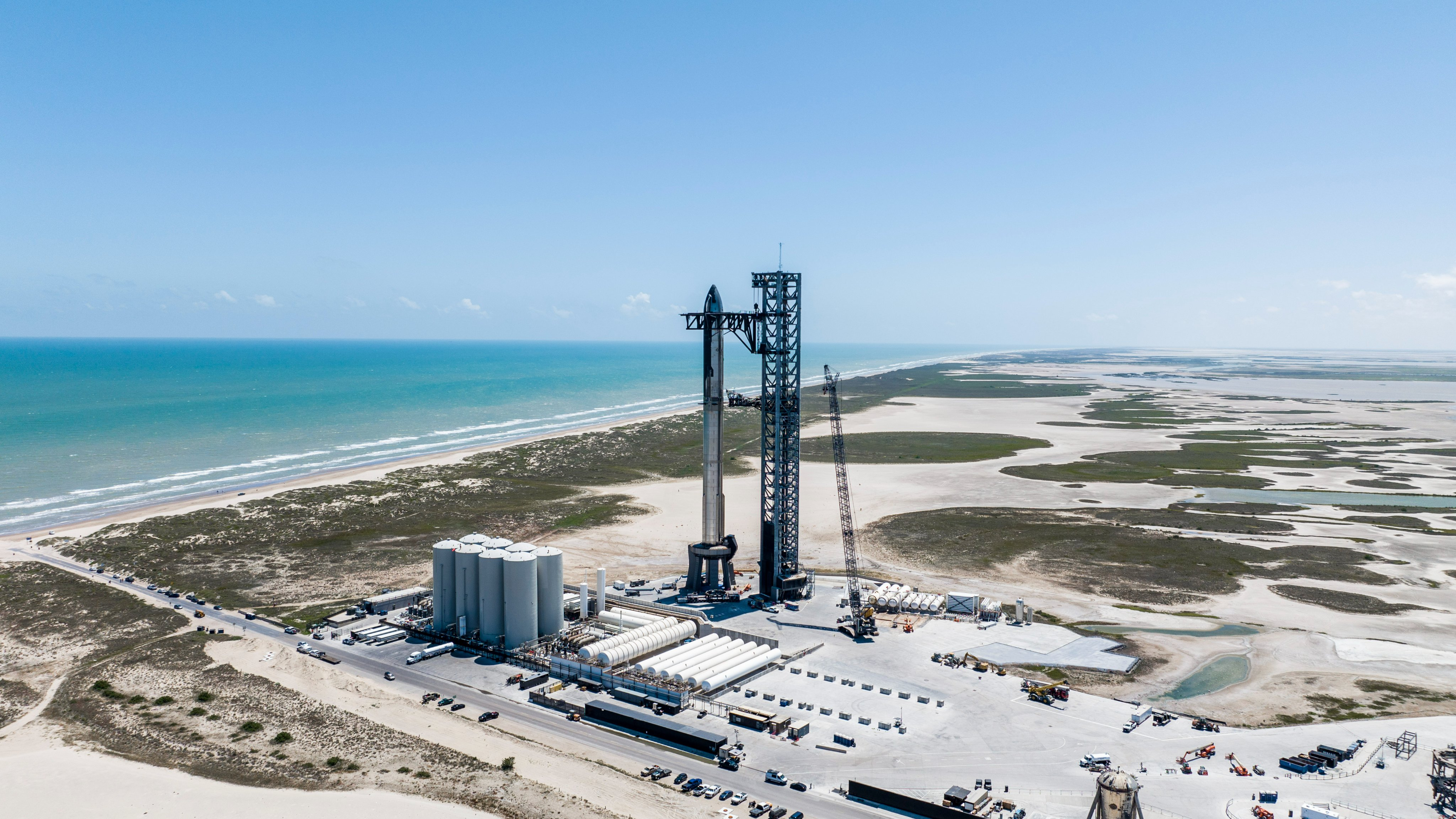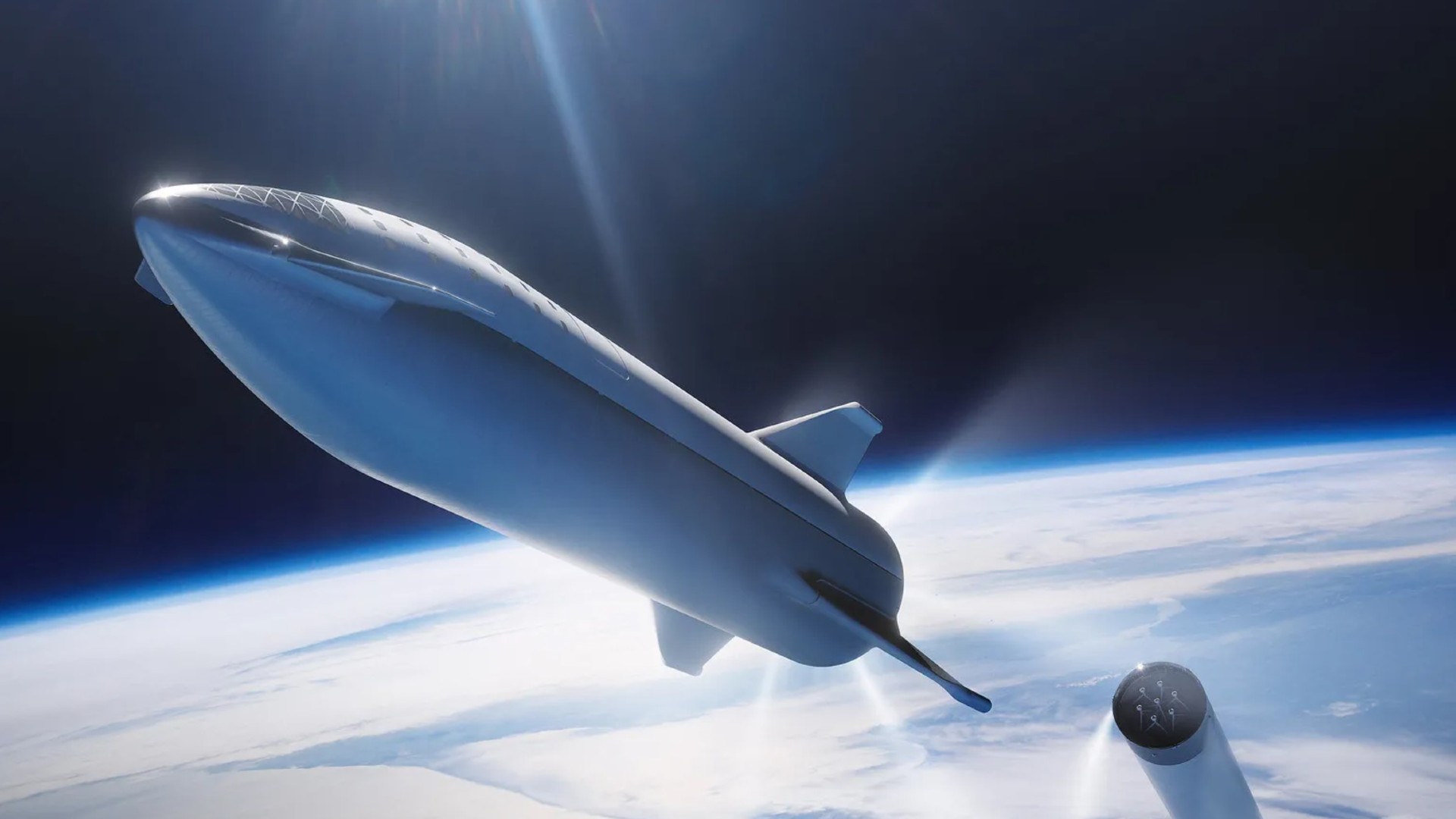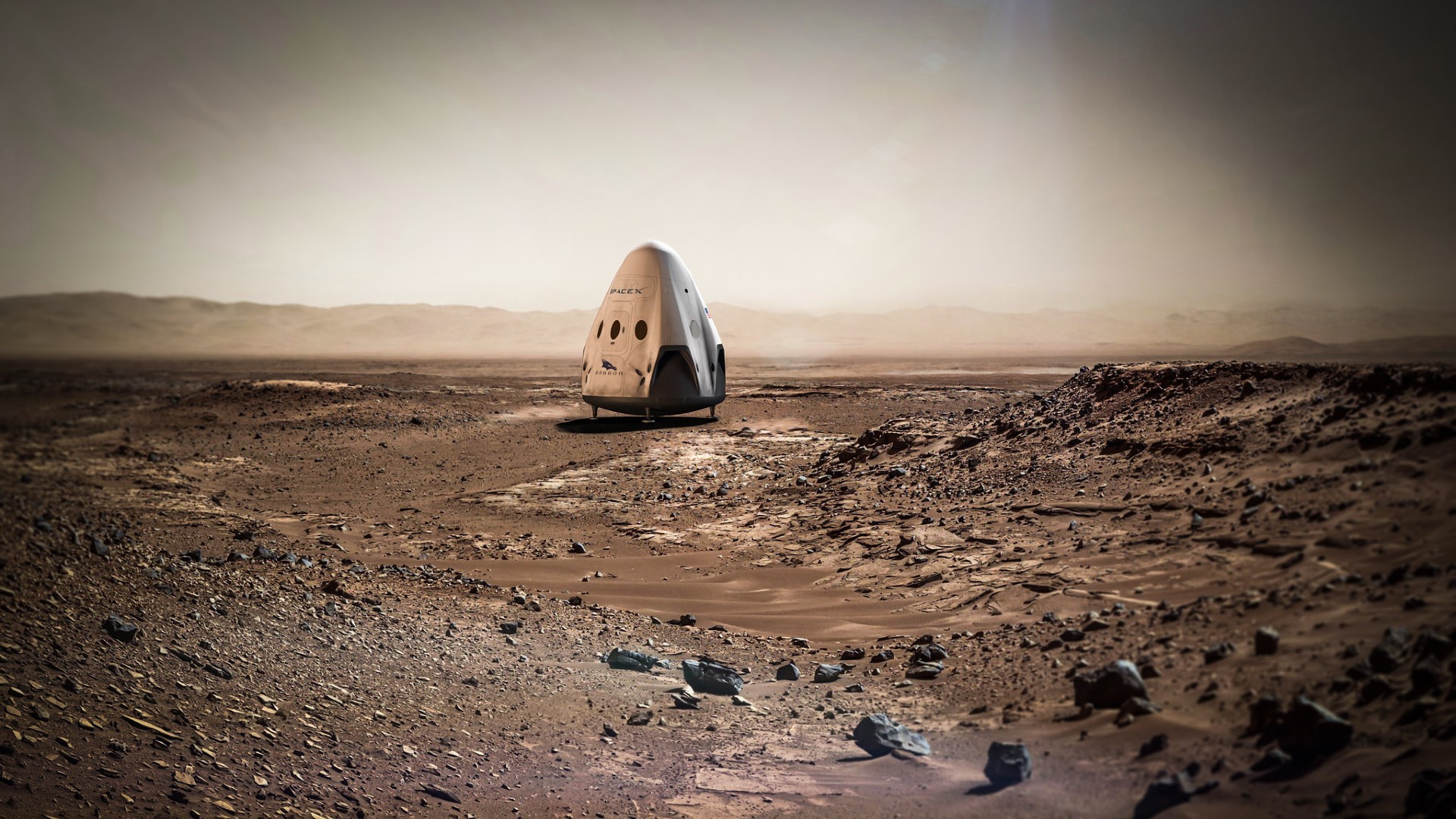When SpaceX's Starship is ready to settle Mars, will we be? (op-ed)

In due time, we will extend our civilization into the final frontier, surmounting our evolutionary limitations through technological and biological enhancements.

Volodymyr Usov is a technology entrepreneur from Ukraine who served as a chairman of the State Space Agency of Ukraine in 2020 and 2021. He is a co-founder of Kurs Orbital, a start-up developing an autonomous rendezvous and docking system for future in-orbit servicing missions.
SpaceX CEO Elon Musk is realistic when it comes to the dangers of settling humans on mars.
"If an arduous and dangerous journey where you might not come back alive, but it's a glorious adventure, sounds appealing, Mars is the place," Musk said in 2021. That's the ad for Mars! A bunch of people will probably die in the beginning."
As we witness substantial advancements with SpaceX's Starship, despite numerous explosions during the tests — an acceptable risk for an innovative spacecraft pushing boundaries — the prospect of its successful first orbital launch is becoming an increasingly tangible reality. Consequently, Elon Musk's vision of Mars missions and the establishment of initial settlements begins to transcend the realm of dreams and venture into the sphere of achievable objectives.
Hence, this progress invites us to delve deeper into understanding the most significant challenges that lie ahead. These challenges stretch beyond the boundaries of rocket technology, impacting our biology and fundamentally questioning our identity as a species.
Related: Watch SpaceX launch a Starship to Mars in this gorgeous new animation
When Starship is ready, will we be?
On Mars, a hostile and radiation-soaked, lifeless world, merely arriving and landing alive is tough for humans, let alone the colossal challenge of survival. It resembles more a celestial tomb than a garden for life. Some thinkers are beginning to ponder, though: Could we craft a new iteration of humanity, genetically sculpted to endure the harsh reality of space travel? In other words, could astronauts be transformed at a genetic level to prepare them for another world?
Breaking space news, the latest updates on rocket launches, skywatching events and more!
To clarify, no one is currently nurturing a genetically enhanced astronaut in a lab. At least, not to my knowledge. Yet, ideas once confined to the realm of science fiction are materializing into tangible concepts. We know that radiation, a potent hazard in space, can induce cancer and other serious maladies. However, Chinese scientists have already made strides in genetically modifying human embryonic stem cells to show supernatural resistance against radiation.
As space is flooded with energetic particles that can damage DNA, scientists have proposed the addition of extra copies of p53, a gene known as the "protector of the genome" due to its role in cancer prevention. Elephants, with their surplus copies of p53, rarely succumb to cancer. Perhaps our future astronauts should follow suit.
Demonstrating the feasibility of such a concept, first gene-editing experiments aboard the ISS has proven the effectiveness of CRISPR technology in space. This offers a promising sign of potential breakthroughs to come. There's no consortium focused on genetic engineering for astronauts yet, but perhaps it's time to consider establishing one.
Failing to protect a person bound for another planet when we possess the means would indeed be unethical, not the opposite.
In the quest to shield astronauts, we may also stumble upon opportunities for "enhancement". Currently, the notion of gene editing for intellect enhancement or perfect vision is fiercely resisted. Yet, if we're honest, NASA already selects individuals based on similar criteria. Out of 12 000 applicants, only 10 were selected into its astronaut class in 2021 to train for future missions. You may be familiar with the movie "Gattaca", in which only genetically superior individuals were permitted to journey to Titan, while those deemed genetically inferior looked on enviously. Like much of compelling science fiction, this 1997 film isn't far removed from reality.
When contemplating survival in space, the genetic concept of "fitness" becomes critical. It refers not to physical prowess but to an organism's ability to thrive and reproduce within a given environment.
In space or on Mars, human fitness is perilously low. Consider an astronaut encapsulated within a suit, the environmental conditions meticulously controlled to keep the wearer alive. But the suit exists solely to mimic the terrestrial environment for which our genes have adapted through millions of years of evolution.
Scientists have begun identifying genes that might enhance our survivability. Are you fortunate enough to possess the EPAS1 variant common in Tibetans, which allows for better survival at lower oxygen levels? How about the natural mutation that leads to lean, robust muscles, potentially offsetting the atrophy of space travel? Some individuals even carry a DNA variant associated with excellent problem-solving skills and low anxiety, a trait that would have greatly assisted Matt Damon's character in his survival efforts on Mars in the film "The Martian".
The odds of possessing all these beneficial mutations are astronomically low. This is why we might consider actively incorporating these traits, potentially using next-generation gene editing technology. George Church, a luminary in the field of genetics at Harvard Medical School, has already compiled a list of rare protective gene variants relevant to an extraterrestrial environment including increased resistance to pain, virus resistance, reduced risk of diabetes, cancer and Alzheimer's and even low odor production.
Church posits that we are already transhumanist, having evolved to the point where our ancestors would hardly recognize us. And his argument carries considerable weight. In our quest to explore the cosmos, we confront not just the challenges of spacecraft engineering, but also the equally complex arena of biological engineering. To survive the harsh environment of space, we must not just adapt but evolve, and do so rapidly. We cannot solely depend on natural selection, a slow process demanding large populations and millions of years of evolution in favorable climate — those are luxuries we won't have in space.
If we want not only to survive but to thrive in space, we must learn how to procreate outside of planet Earth.
In a study published in the International Journal of Astrobiology, Matthew R. Edwards explored several cosmic habitation strategies. The conventional model of space colonies, Mars serving as an archetypal example, was matched against the rather unorthodox concept of Embryo Space Colonization (ESC). This audacious model posits the transmission of human embryos to extraterrestrial colonies, where their development into adulthood would be overseen by a fusion of ectogenesis and robotics.
Intriguingly, the analysis suggests that this futuristic paradigm holds greater promise for securing our species' long-term survival in the cosmos compared to conventional colonial establishments.
Traditional space colonies are encumbered by an array of significant obstacles. Among the challenges we face on Mars is the scarcity of CO2 and the unfamiliarity of Mars' gravity, which is approximately 38% that of Earth's. These conditions are complicated by an inhospitable environment saturated with potentially lethal radiation. It makes such colonies less than optimal platforms for humanity's aspiration to venture beyond our home planet, and even more challenging for fostering a new generation within the vast expanse of our solar system. It appears highly unlikely that we could rely on our Earth-familiar methods of natural procreation within such severe extraterrestrial conditions.
Recently, we've witnessed noteworthy advancements in the early prototypes of ectogenesis — a process that enables fetal development entirely outside the human body. This concept was first proposed a century ago by the renowned Cambridge biologist, J.B.S. Haldane. The futuristic reproductive science he envisioned, albeit optimistic, was frighteningly reimagined into a dystopian landscape in the initial chapters of Huxley's "Brave New World." Today, a reassessment of this perspective seems necessary, considering the integral role it could play in our long-term survival in space.
From hope to hesitation, and back to light.
Currently, several international research groups are breaking new ground with fetal life-support systems. These promising inventions could potentially nurture the life of extremely premature babies in an environment akin to a womb. Research teams from the US, Australia, and Japan have engineered innovative artificial wombs, such as the Biobag and the EVE platform. These have achieved some success with highly premature lamb fetuses. Concurrently, a Dutch team is exploring a perinatal life support (PLS) system using advanced simulation technology.
Significant strides have been made in imitating the conditions of the womb during late-stage pregnancy. However, our understanding of the earliest weeks remains limited. This is due to the immense difficulty in observing in-womb events, coupled with past restrictions on research involving human embryo development outside the womb beyond 14 days. These regulations are now easing, allowing case-by-case considerations. This paves the way for the progression of artificial womb technology, even though the scientific hurdles in gestating a viable human baby outside the body remain.
In one such instance, scientists at Israel's Weizmann Institute of Science managed to grow mouse embryos ex utero for about 11 to 12 days, slightly over half their gestation period. While these embryos developed organs and limbs, the team continues to grapple with the challenge of extending this process beyond the halfway point.
This is where technology companies like Colossal Biosciences can play a transformative role. Colossal, primarily known for its pioneering work in Mammoth de-extinction and other almost science fiction research, could revolutionize the field of ectogenesis. Colossal's CEO, Ben Lamm, has acknowledged that large-scale de-extinction would necessitate ectogenesis rather than traditional surrogacy. In the interest of social acceptance, he prefers to use the term 'ex utero' rather than 'artificial wombs.'
With its formidable team of top-tier researchers and scientists, led by Lamm's co-founder George Church, Colossal is a strong candidate to actualize full ectogenesis and artificial womb technology. After recently securing $250 million in investment at a $1 billion valuation, the company has the financial resources to match its innovative spirit.
After 4 billion years, this is the end of the beginning
It takes a special kind of genius raising hundreds of millions from VCs to de-extinct Wooly Mammoth and Dodo, and let me tell you, Ben Lamm has that genius in spades. Figures like Elon Musk, Ben Lamm, and George Church have all the potential to redefine our limits. By employing genetic modifications and ectogenesis, they could equip humanity for the unique challenges of the cosmic environment, aiding our transformation into a truly spacefaring civilization. In doing so, we become architects of our own evolution.
Once, the likes of Copernicus and Darwin demoted humanity from the focal point of the universe to a mere product of evolution on an inconsequential planet. But in the light of our advanced understanding, we see that we are more than just another link in the chain of evolution. We are a historical novelty, capable of guiding the path of evolution itself.
In due time, we will extend our civilization into the final frontier, surmounting our evolutionary limitations through technological and biological enhancements. As of now, humanity remains the sole form of intelligence confirmed with certainty. Therefore, our primary goal must be to preserve the existence of this intelligent life in the universe.
Our genome, then, becomes more than just the blueprint for life on Earth. It transforms into the genome of the cosmos, a testament to humanity's adaptability and resilience.

Volodymyr Usov is a technology entrepreneur from Ukraine who served as a chairman of the State Space Agency of Ukraine in 2020 and 2021. He is a co-founder of Kurs Orbital, a start-up developing an autonomous rendezvous and docking system for future in-orbit servicing missions. He is a member of the International Academy of Astronautics and currently resides in Turin, Italy, where he is developing Kurs Orbital's technology with support from the European Space Agency's Business Incubation Center.




